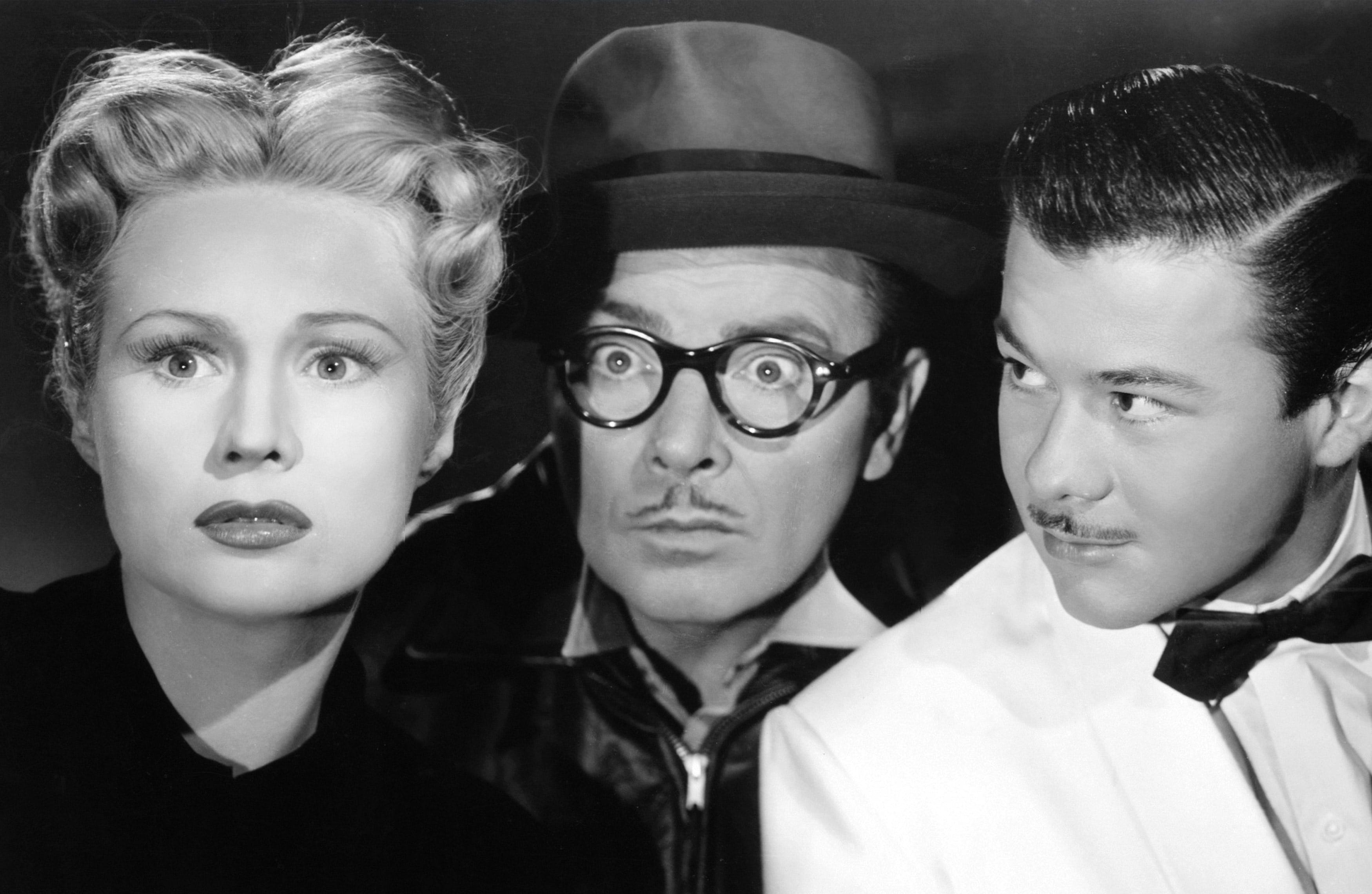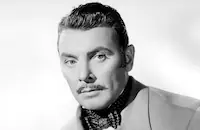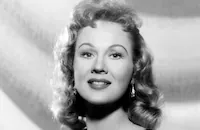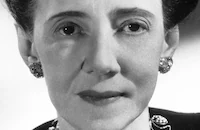Out of the Blue is a charming screwball B-movie that was made due to the success of the legendary film noir Laura (1944). Vera Caspary wrote the novel of the same name that Laura was adapted from, and she soon found herself in demand with movie studios. Eagle-Lion offered her a percentage of the profits to film her screenplay for Out of the Blue (co-credited with Walter Bullock and Edward Eliscu). She turns a similar story from Laura, where a woman presumed to be dead turns up alive, and makes it comic.
Set in a Greenwich Village apartment complex filled with nosy neighbors, it begins with a petty spat between bohemian photographer David Galleo (Turhan Bey) and his bourgeois neighbors Arthur (George Brent) and Mae Earthleigh (Carole Landis). Mae wants David’s dog to be exiled from the building for digging up her flower beds one time too many. Arthur sics his lawyers on David, thinking his troubles will soon be over. But when Mae goes out of town, Arthur gets picked up by soused interior designer Olive Jensen (Ann Dvorak), who ends up passed out on Arthur’s floor. Thinking she might be dead, Arthur dumps her body on David’s balcony – where it is seen by two busybody neighbors (Elizabeth Patterson and Julia Dean) who call the cops. It is at this point that Olive wakes up, and things get really weird.
The Eagle-Lion production team went out of their way to cast against type. Turhan Bey was an Austrian-born actor of Turkish and Czech-Jewish ancestry who was typecast as an Eastern mystic/exotic in various Mummy and Ali Baba movies. Here he is a seductive and charming Greenwich Village artist with a knockout girlfriend (Virginia Mayo) who pulls a devilish prank on his straight-laced neighbors. Carole Landis, usually a bombshell love interest, is a henpecking wife here. Then there is Ann Dvorak, who gives a tour de force in acting drunk – as her character Olive remains blotto for the full 86-minute runtime. It is a demandingly motor-mouthed high-wire performance that makes the film worth watching all on its own.
Dvorak admitted that it was a demanding part. Quoted in Christina Rice’s Ann Dvorak: Hollywood’s Forgotten Rebel, she recalled, “Timing is so important in such a portrayal that it keeps you on your toes all the time.” Caspary was so impressed with Dvorak that she was planning a follow-up to feature Ann to be entitled Out of the Red. Christina Rice quotes Dvorak: “In it I’ll play a gal who goes to Las Vegas and in a moment of imbibing rather freely, cleans up at the tables.” The project never got off the ground, but it indicates just how much Dvorak stumbles away with the picture.
In fact, everyone appears to be having a blast, including Virginia Mayo, who sashays into David’s apartment hoping to buy his dog – while wearing a remarkable sun hat with poodles stitched onto it (the often stunning costume design is credited to Don Loper). Mayo, according to Ann Dvorak: Hollywood Rebel, said it “wasn’t much of a picture”, though she developed a sparkling rapport with Turhan Bey. There is a remarkably funny sequence where Bey and Mayo pretend to bury Olive in a shallow grave, and it appears both actors are trying very hard not to break out in laughter.
The scenario by Caspary, Bullock and Eliscu is filled with darkly funny and erotically charged moments, enough of them to wonder how it passed the production code then being enforced. Dvorak thought the same thing – “between you and me we probably got away with murder. That is none of the performance was censored, saved by the comedy angle no doubt.” It is very frank about adultery, crimes of passion, casual sex and even more casual murder – a pre-Code sensibility in a post-Code world.
Director Leigh Jason keeps things moving at a pre-Code speed but is hamstrung by the relative blandness of the sets his was given to work with. It was certainly a low-budget affair from B-picture studio Eagle-Lion, and the main locations are a bar and a few indistinguishable apartment sets. But there are plenty enough sparks given off by the cast to keep Out of the Blue from ever flatlining.


























